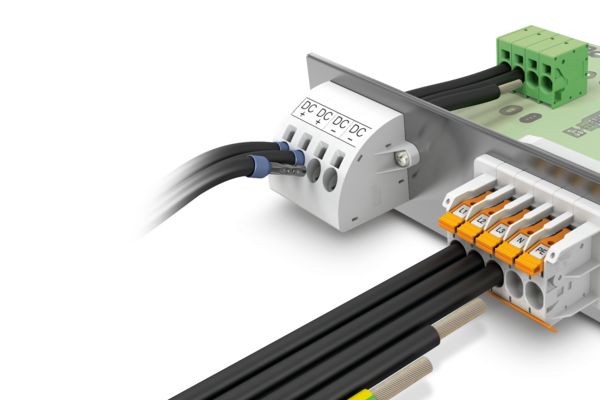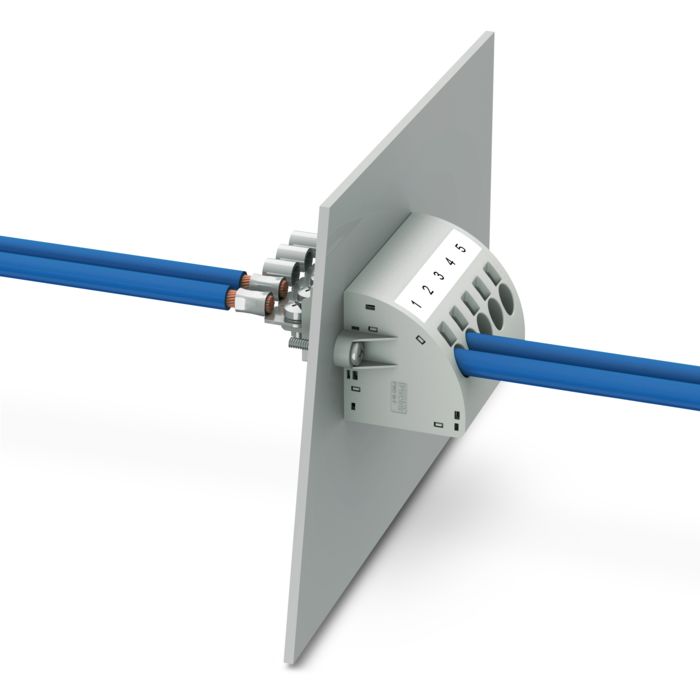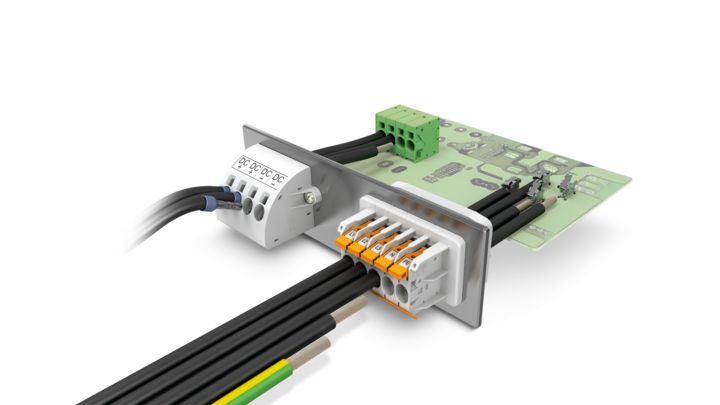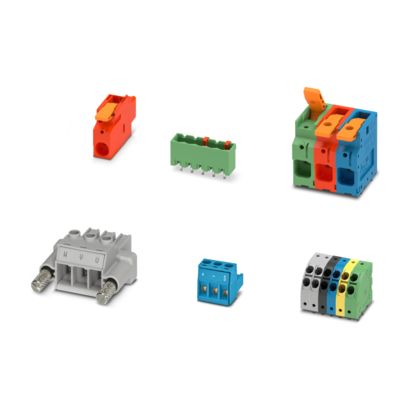Device connection for high currents Convenient and powerful: Connect high currents and voltages quickly, easily, and safely. With the new PCB and feed-through terminal blocks from Phoenix Contact, you can bring high levels of power through your housing panel and to the PCB.

Your advantages
- Quick and convenient conductor connection – with Push-in and Push-Lock connection technology
- Save costs – with integration into the SMT production process
- Re-usable – with re-closable spring contacts
- Powerful connection – with current carrying capacity up to 76 A
- Consistent connection – with connection technologies from the housing outer panel to the PCB

PWO 16 panel feed-through terminal block
PWO 16 panel feed-through terminal block with Push-in connection
- 76 A/1000 V
- Conductor cross-sections from 1.5 to 16 mm²
- Sealed against potting compounds

PLW 16 panel feed-through terminal block
PLW 16 panel feed-through terminal block with Push-Lock spring connection
- 41 A/1000 V
- Conductor cross-sections from 1.5 to 16 mm²
- Tool-free conductor connection
- Sealing with optional seal

Sealing with optional seal
Simple sealing
Using the sealing option specifically designed for the PLW 16, the terminal block can be sealed against unauthorized access.

PTSPL PCB terminal block
PTSPL 6 PCB terminal block without insulating body
- 41 A/1000 V
- Conductor cross-sections from 2.5 to 6 mm²
- Spring contact can make multiple contacts
- Optimized for SMT and THR mounting

SUNCLIX spring connection
Simple conductor connection
Connect your conductors quickly and safely using the unique SUNCLIX spring connection. Simply insert the stripped conductor, close the spring, and you’re done!

SPT 16 PCB terminal block
SPT 16 PCB terminal block with Push-in connection
- 76 A/1000 V
- Conductor cross-section from 0.75 to 16 mm²
- Fast and tool-free connection of rigid and flexible conductors

Do you want to find out more?
Click on the following link and discover our products for device connections for high currents.



